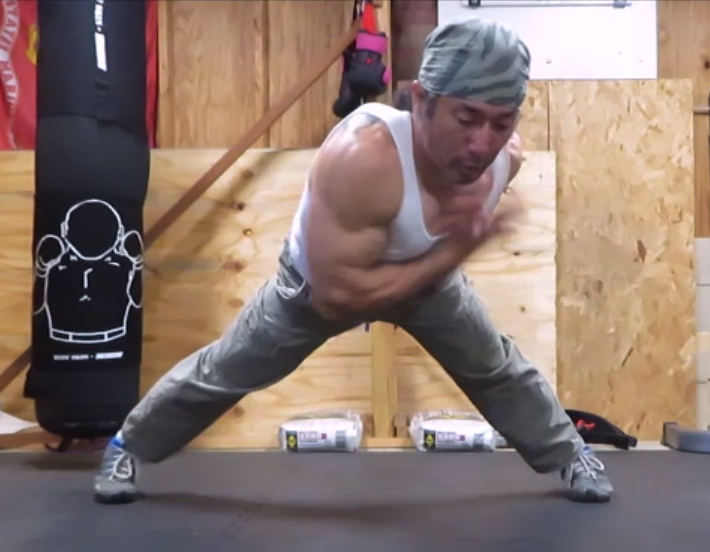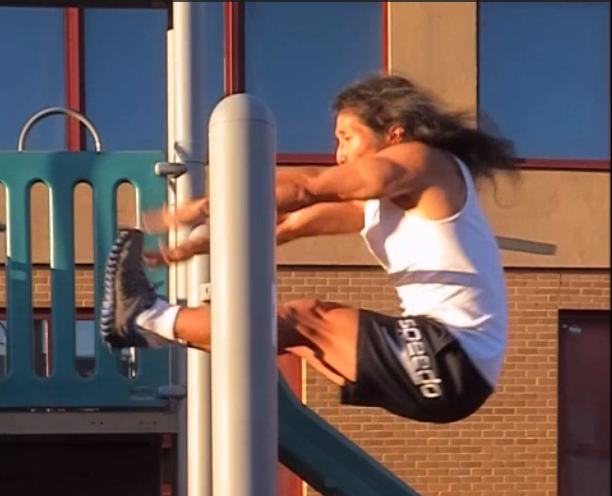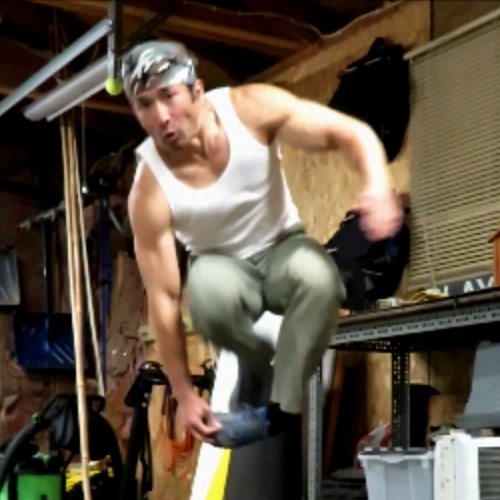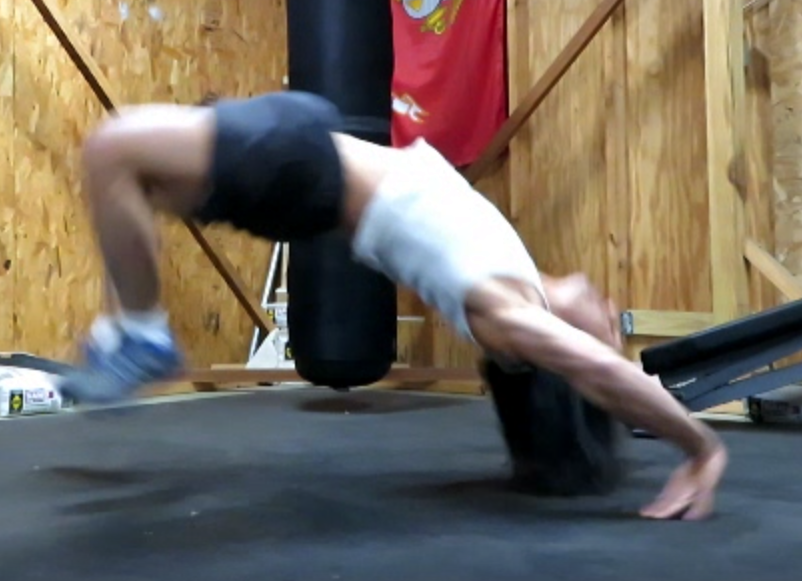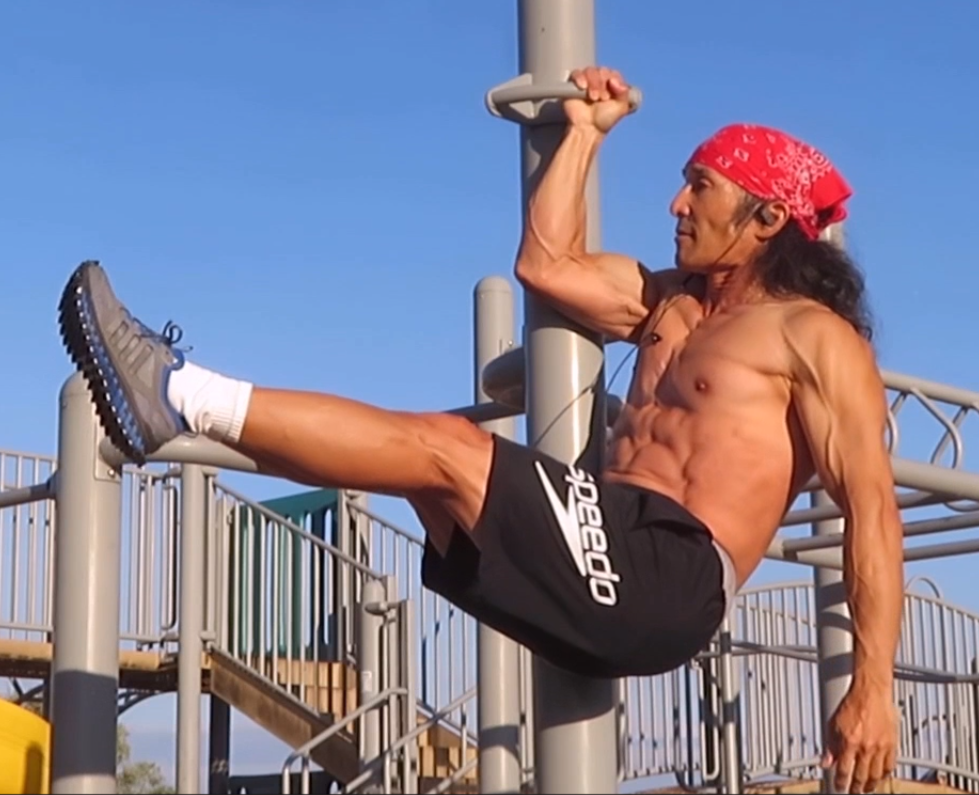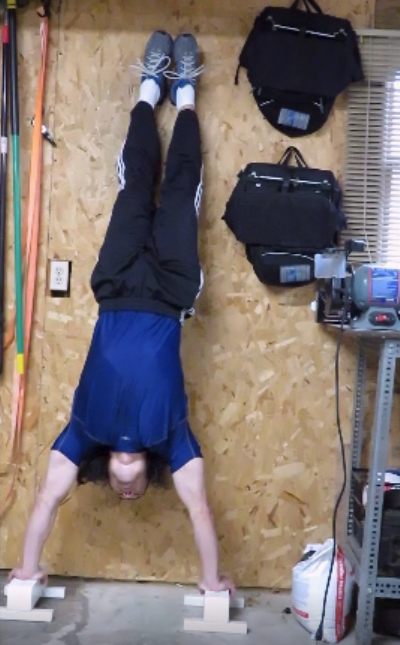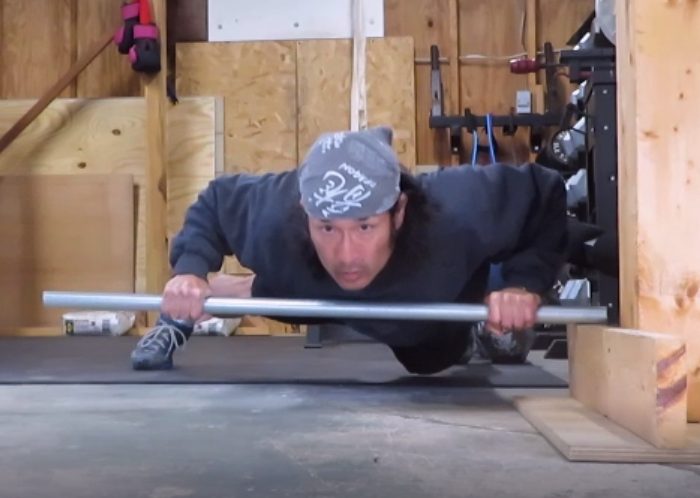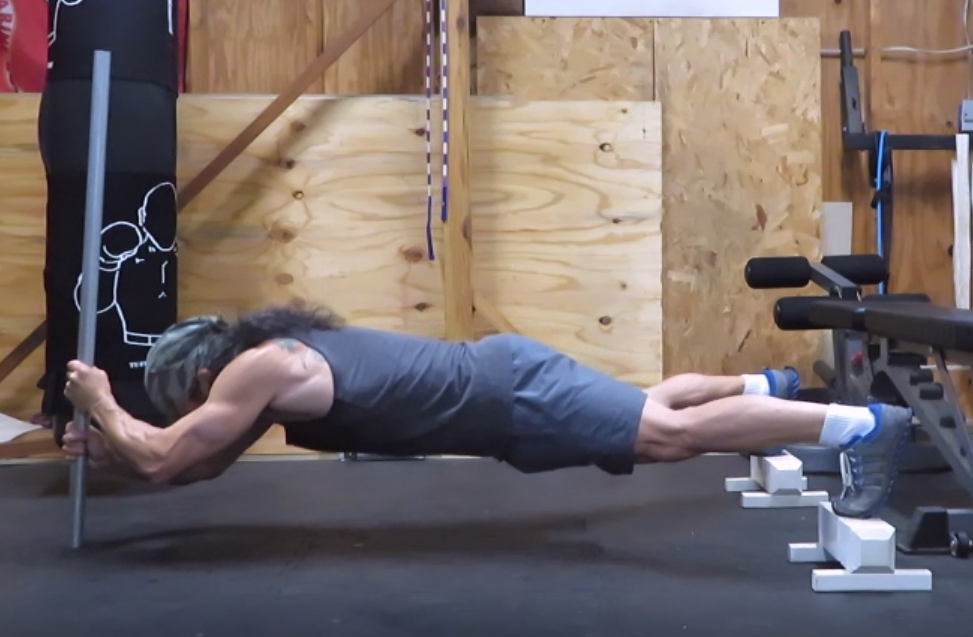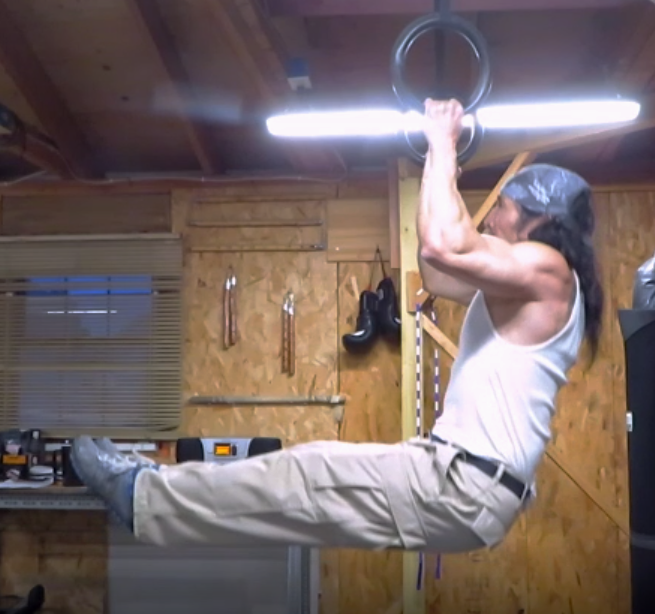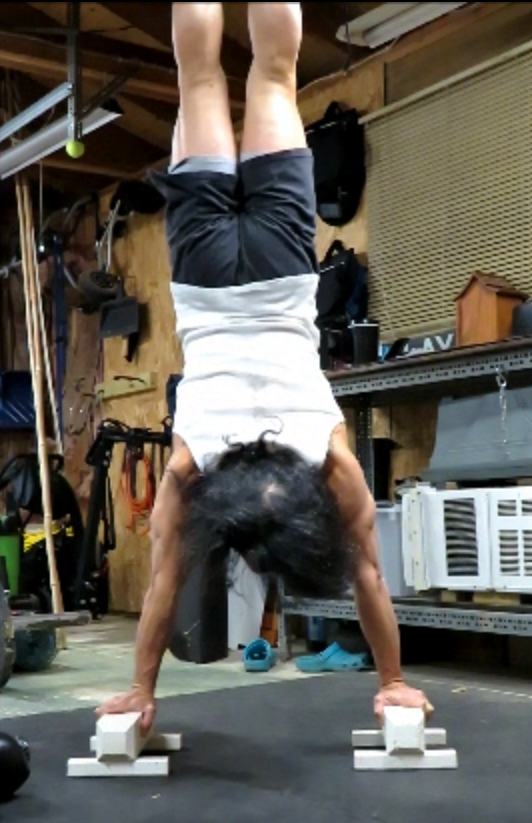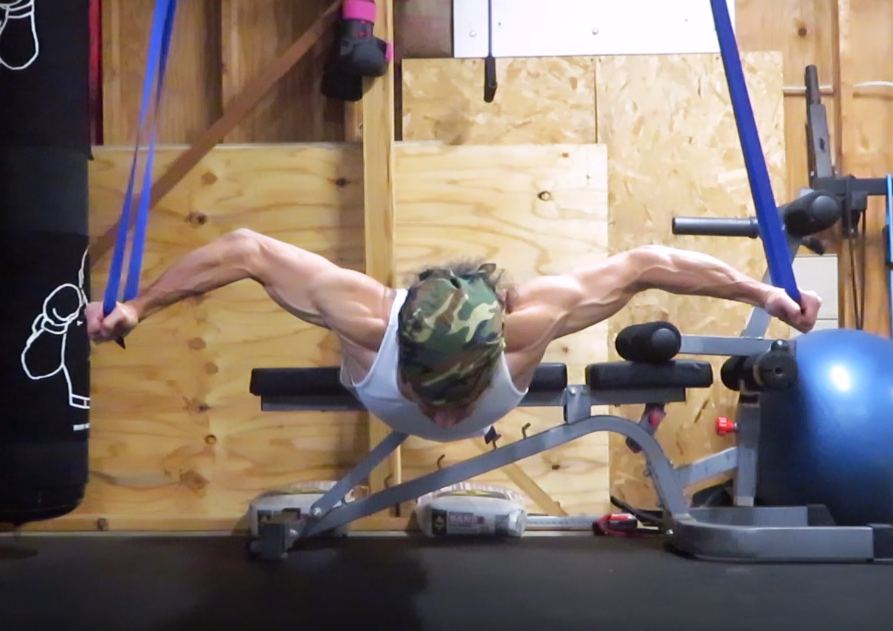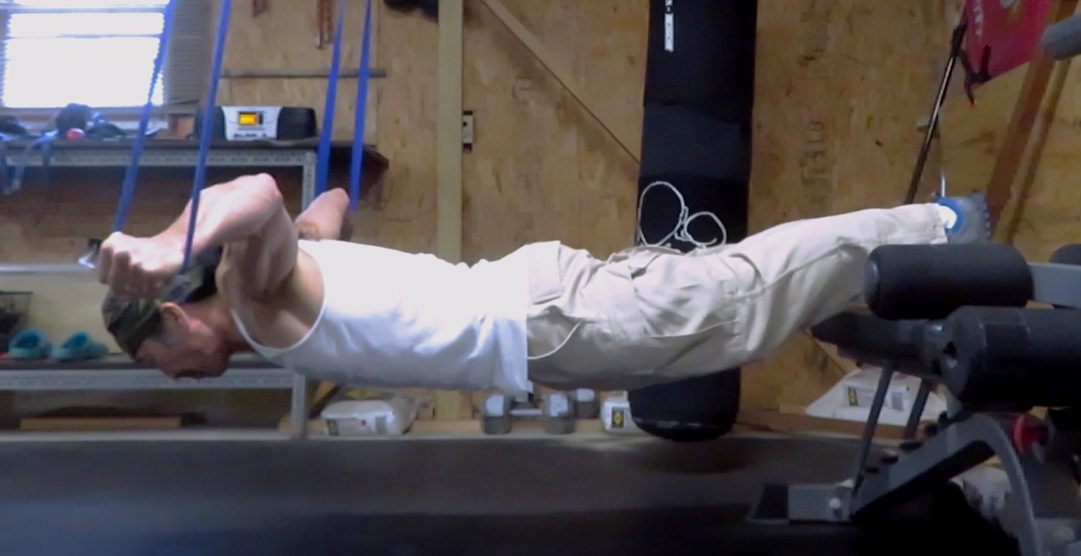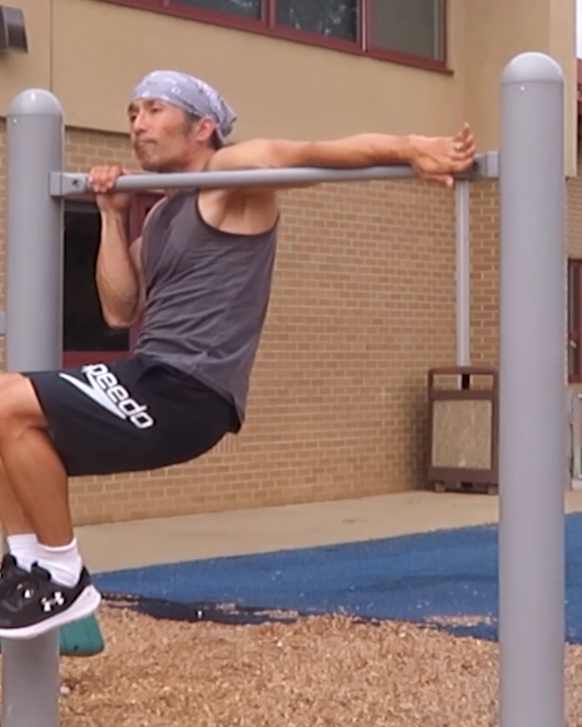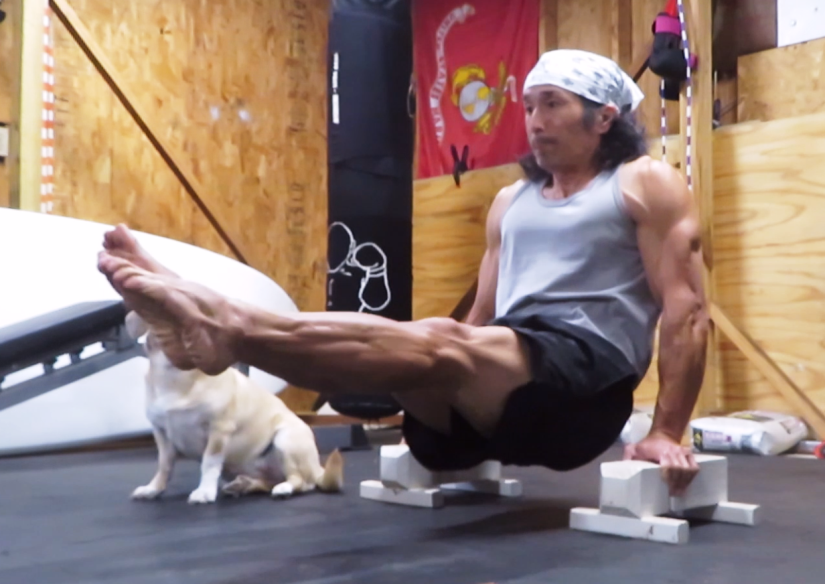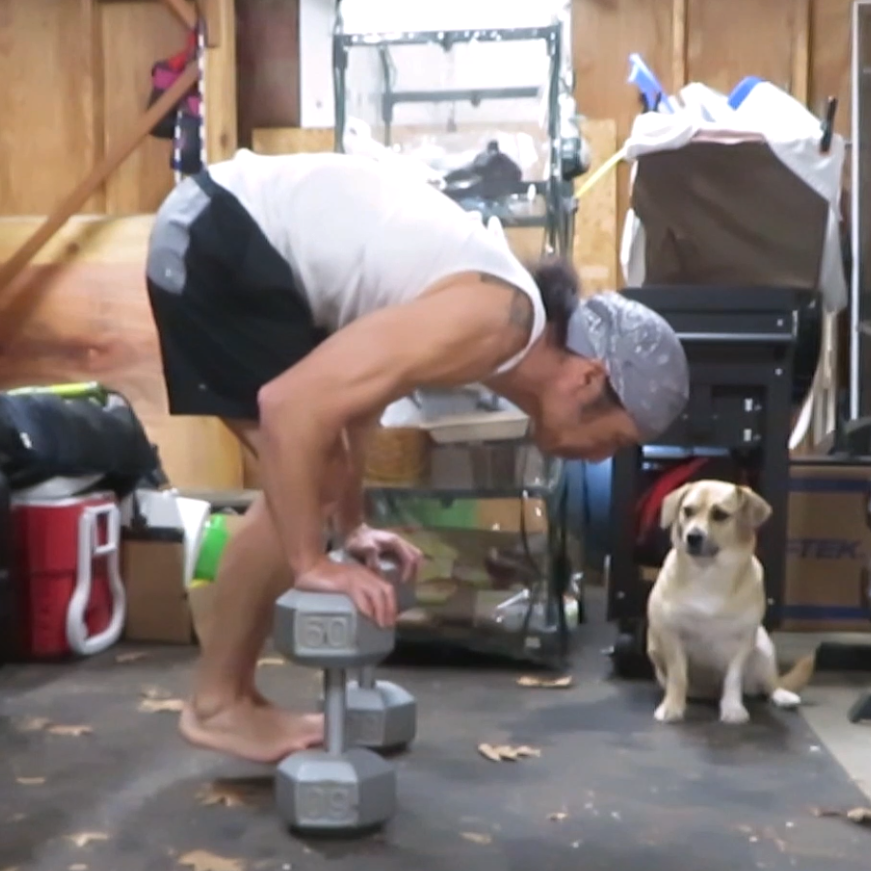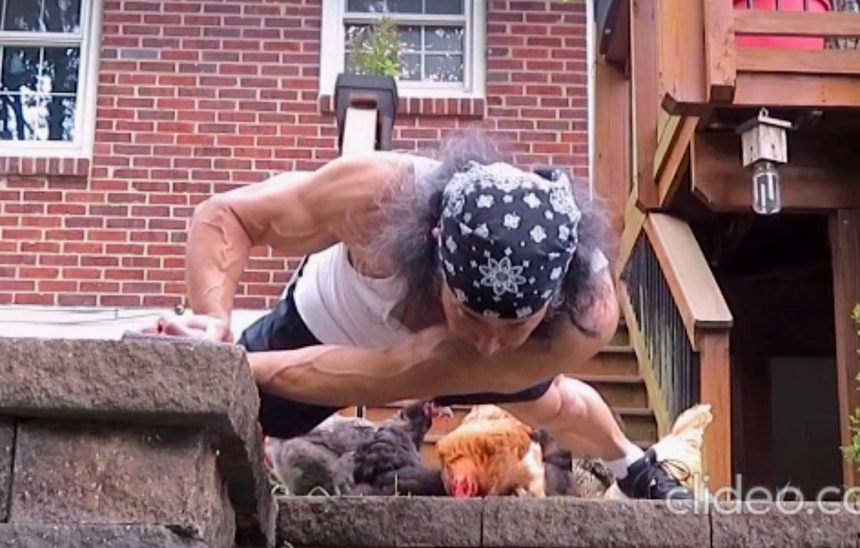Only when you are extremely soft and pliable can you be extremely hard and strong.
- Zen proverb
They say that as you age, you lose some flexibility. But at 50, I can still do the straddle (Chinese) splits.
When to stretch
In the past two decades, study after study has shown that so-called static stretching, in which you hold a stretch for 30 seconds or more, doesn't prepare muscles for activity; in fact, it can do the opposite. Those toe touches will inhibit the activation of muscles, making them weaker, for about half an hour. On the other hand, evidence shows that dynamic stretching, or moving your body through a range of motions, leaves your muscles and joints much better prepared.
- from the April 29, 2012 issue of Parade Magazine
I do a good bit of static stretching but I save it for the end of a workout. If I do dynamic stretching, it is closer to the beginning, after the warmup.
Stretching tips
Relax into the stretch. If you find yourself tightening the muscles you're trying to stretch to maintain the position, modify your stretch.
Use a small towel or belt to assist if needed. This will help keep the body properly aligned.
When doing stretches that involve bending the torso to the knee, concentrate on leading with the sternum, not the nose, to ensure proper body alignment.
Keep the muscles warm.
Try to decelerate your metabolism when stretching. Concentrate on slowing your breathing.
Exhaling slowly will help you stretch further.
Stretches should be deliberate and controlled, not bouncy.
Many sources recommend holding each stretch for 15-30 seconds. Yogis hold for a certain number of breaths.
Don't stretch to pain.
Stretches
Fitness is more than strength. It is a balance amongst strength, endurance, power, speed, balance, and flexibility. Each person needs to determine the appropriate combination and level of each.
Most of the below stretches I learned from studying gymnastics, dance, running, or martial arts. A few were learned from a
yoga instructor.
Different disciplines stretch differently depending on the purpose. For example, dancers and gymnasts frequently do leg stretches with the toes pointed whereas runners stretch with the toes pulled back. I recommend doing both. The ones I show are some of my favorite static stretches.
Shoulder
These are particularly good for preventing
rotator cuff problems, an overuse injury common to weightlifters who don't maintain a balanced training routine. I've suffered such problems but after seeing an orthopedic doctor, a physical therapist, modifying my training routine, and incorporating rehabilitation exercises and stretches, I'm fully recovered without the need for surgery.
1 / 3

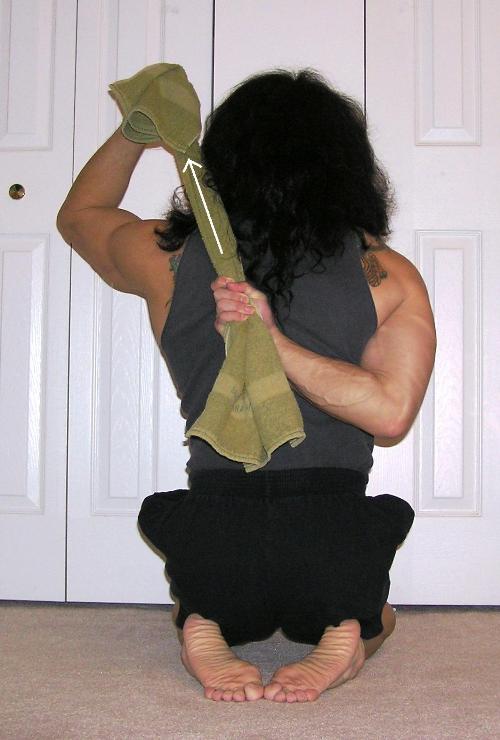
Upward shoulder stretch.
2 / 3

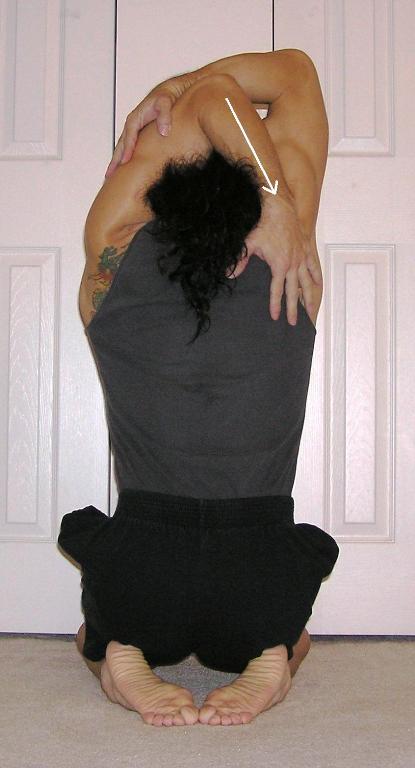
Downward shoulder stretch.
3 / 3

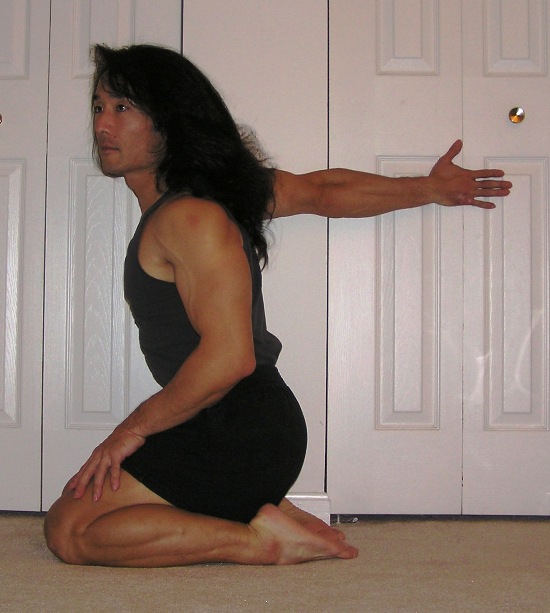
Chest and shoulder stretch.
❮
❯
Wrist
These stretches can prevent
tennis elbow and
carpal tunnel syndrome. Also see
stretching the wrists and hands.
Many of the stetches I do (such as these) are a little different from the conventional in that I prefer to use body position or gravity to permit me to stretch further. I like this over using some other muscle to assist with the stretch.
1 / 2

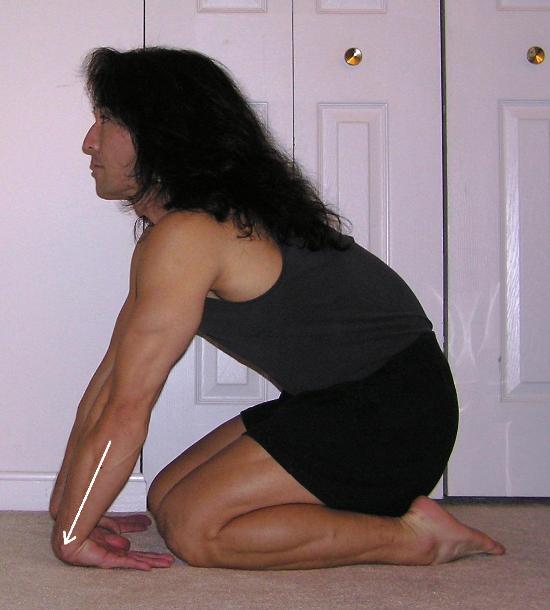
Palms up.
2 / 2

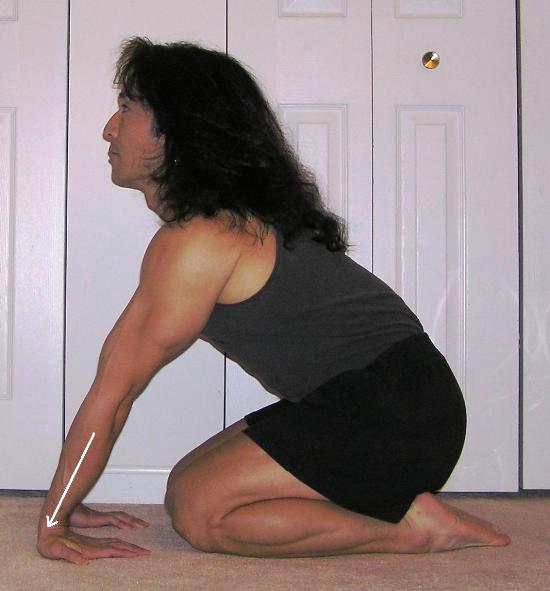
Palms down.
❮
❯
Lower back
My favorite lower back stretch is the
plow, a popular yoga position. While yogis have been doing it for hundreds of years, many gyms do not recommend it, claiming it isn't suitable for those with lower back problems. It's effective but if it hurts, don't do it.
Yoga has many other stretches and exercises for the lower back. If that is an area you wish to improve, I suggest taking some yoga classes. You can learn a lot online but a good instructor will help ensure you are executing proper form and can make suggestions to help you achieve your goal.
Abdominal
You work your abs hard so don't ignore stretching them. My favorite abdominal stretch is the yoga pose called the
cobra. A similar position, called
upward dog, differs only in that your toes are turned under so you're supporting your weight on them.
Hip flexors
I often find my hip flexors feeling tight from kayaking. These stretches help keep them loose.
I learned the below from Muay Thai kickboxing master
Ajarn Surachai "Chai" Sirisute. Squat down so that the left shin is on the floor. The other leg should have the right foot on the ground with the knee up. Bend at the torso to plant both forearms on the floor, thumbs touching, and index fingers touching. Left elbow should be near left knee and right elbow should be near right big toe. Forearms, left shin, and right foot should form a square on the ground. Hold, rock gently back and forth, then repeat on other side.
The below stretch was learned from a dance instructor. Place the right leg behind, almost straight. Bend the left leg, placing the shin perpendicular to the rear leg. Bend at the hips, maintaining an upright posture, stretching the right hip flexor. Use the hands to gently push back the torso, increasing the stretch.
Keeping the hip joints loose is essential for any martial art that involves a significant amount of kicking.
Groin stretches
A lot of martial artists place a great deal of emphasis on groin stretches.
One of my favorite groin muscle stetches is the
butterfly stretch. Grab the ankles and push the knees down with the elbows to increase the stretch.
I learned an inverted version of the butterfly stretch from a
Brazilian jiu-jitsu instructor. This uses gravity to stretch rather than pressing with the elbows. Lie face down with legs in butterfly stretch position. Increase the stretch by arching the back as in the cobra pose.
A second modification of the butterfly stretch requires one to place the feet forward of the hips then bend at the hips. When doing such stretches that involve bending the torso toward the floor, concentrate on leading with the sternum, not the nose.
A third modification taught to me by a dance instructor places the feet forward of the hips with the feet about a foot apart.
When I took gymnastics classes in high school, I stretched for long periods of time to achieve the Chinese (straddle) splits. This involved stretching to the right...
...then the left, and finally to the center.
I'd do half the stretches with my toes pulled back and the other half with my toes pointed. After each cycle, I'd spread my legs wider and repeat. Before I graduated, I could do the Chinese splits and place my torso flat on the floor. Later, I was able to combine this flexibility with strength and balance to support my weight on risers in the straddle splits position.
Also see
Working towards the splits.
Hamstring stretches
Hamstring injuries are extremely painful and debilitating. But they can be avoided with stretching.
I've seen the
hurdlers stretch done with the rear leg bend behind the hips rather than in front. I find that variation more difficult to achieve proper alignment and relaxation. If you can't reach your foot easily, use a towel or belt to help pull your sternum towards your knee.
Touching the hands to the floor with straight legs is a common and easy stretch. Relax at the waist and let gravity pull your upper body to the floor. Try and touch your fingertips to the floor. If you can do this, touch your knuckles to the floor. If you can do that, try putting your hands flat on the floor. To take it a step further, cross one leg over the other, keeping both legs straight.
Finally, try touching your face to your legs without straining your neck (reach with the sternum). Remember to exhale into the stretch.
Hamstrings are sometimes tight to compensate for weakness or instability elsewhere in the body. Specifically, tight hamstrings are often an indication of weak lower-abdominal muscles and/or weak lower-back muscles [2].
PNF Stretching
Back in the 1970s, we were taught to bounce when we stretched. In the eighties, we were told that was bad. So we did static stretches before and after a workout. Then in the nineties, they told us we shouldn't do static stretches before a workout. I never quite know what to believe anymore but I figure the experts certainly know more than me so I'll go along with the current school of thought. I just won't base my training solely on what appears in the latest trendy magazine since they tend to be fickle.
In martial art classes, we would do dynamic stretching before training. As of 2015, that is still good [4].
In 2018, I read about
proprioceptive neuromuscular facilitation (PNF) stretching.
Originally designed for rehabilitation, it's now popular with athletes, including martial artists.
Introducing tension to a passively lengthened muscle sort of 'tricks' the muscle into thinking it can maintain this longer length. [4]
Isometric stretching is the fastest and most efficient method of increasing static passive range of motion [1] [6].
What is the difference between isometric stretching and PNF stretching?
The simple answer is, "They're the same thing [5]."
Quite a bit has been written about PNF stretching so rather than possibly describe it incorrectly, I suggest just doing your own web search on it to get the info first hand. I can't comment about it since it is still very new to me. If I develop an opinion of it, I'll sure sure to let you know.
Miscellaneous
Too much flexibility in some parts of the body can be detrimental to your sports performance or just unhealthy [1]. This may sound counterintuitive but I've been told that if football players have too much flexibility in certain areas, it increases their chance of certain impact injuries.
To some extent, flexibility is genetic, "...it's a function of body structure...some people seem to naturally possess more flexibility than others [2]."
While flat feet usually aren't considered a good trait, it is often associated with unusual flexibility of other joints [3].
Sources
[1] "Stretching Scientifically: A Guide to Flexiblity Training" by Thomas Kurz. Published by Stadion, 1987.
[2] "Loosening Tight Strings" by Matt Fitzgerald,
Experience Life, December 2006.
[3] Learning About Health and Fitness (original link no longer exists)
[4] "Solo Training 3, 50 and Older" by Loren W. Christensen, 2015.
[5]
Flexibility Research - What is the Difference Between PNF and Isometric Stretching?
[6]
Her Sports Corner - Isometric Stretching


